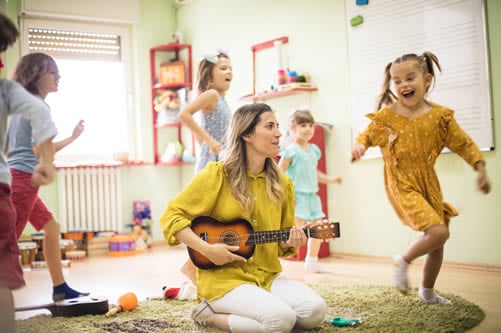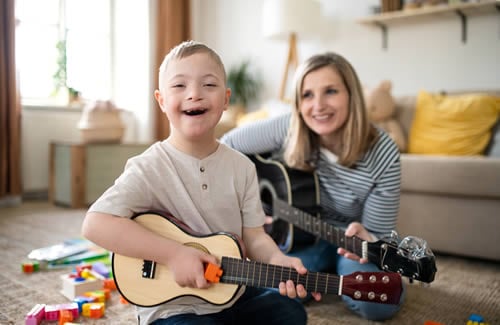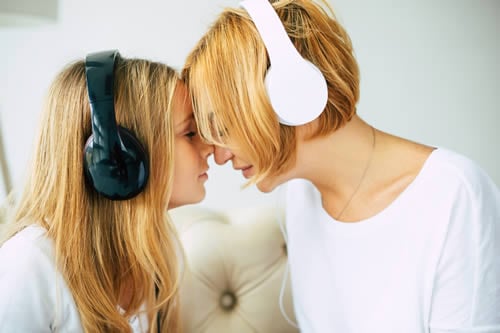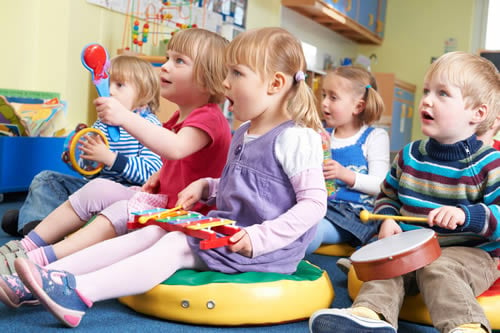Most of us know the pleasure that comes from singing along to a favourite song or dancing to a funky disco number. But according to experts, music provides so much more than just a fleeting moment of fun. It is, they maintain, a fantastic tool for:
- Boosting wellbeing
- Cognitive ability
- Physical co-ordination
- All aspects of a person’s life
Music Boosts Wellbeing

Daniel Thomas is a music therapist and the MD of Chroma, an organisation that provides art, drama and music therapy in schools and healthcare settings across the UK. He explains that there has been a lot of neuroscientific research into how music affects the brain.
“There’s overwhelming evidence that music provokes an emotional and physical response in people,” he comments. “It also affects our cognitive processing and how we regulate ourselves. It doesn’t matter where we’re born or what language we speak – it affects all of us in the same way.”
Although music helps all children, he says, it can be especially beneficial for youngsters with special needs. Singing songs together and clapping along, for example, encourages turn-taking, listening skills and responsiveness and helps to develop a sense of self. Combining music with physical activity – stomping around to a song with a definite rhythm such as the nursery rhyme ‘The Grand Old Duke of York’ – strengthens the brain-body connection. This, he points out, can even help children with physical impairments like cerebral palsy to gradually improve the range and flow of their movements.
“Melody and rhythm can also help with speech and language development,” Thomas continues. “Melody seems to ‘stick’ in the brain, somehow, so you can use it as scaffolding for learning language. For example, if a non-verbal child remembers the tune to ‘Twinkle, Twinkle Little Star’, they might learn to use it to ask for a drink of juice. Maybe they will eventually be able to add words. Using music in this way makes a massive difference though it can take a long time and a lot of repetition. It doesn’t happen overnight.”
Music Strengthens Social Bonds

Music is also highly effective in forging social connection and encouraging emotional understanding. Families, he suggests, can use it in the home to do this in a number of ways. “Sharing music is fun. You can have it playing when a child comes back from school to manage the transition to the home environment. If they’ve had a bad day, they can express those angry feelings by banging a drum, for example, or using a shaker.
“At bedtime, sing your child a lullaby,” Thomas continues. “It’s not about whether you have an amazing voice – it’s about relaxation and bonding. In the morning, when you need to get everyone up and out the door, you can put on something with a faster tempo and perhaps get everyone to eat their cereal to the beat of the music!”
Soothing Adolescent Angst

Older children often struggle with strong emotions during the teenage years, which can feel overwhelming if they also have special needs. Here, Thomas explains, parents can use music to talk about relationships and feelings in a less direct way.
“You can look at lyrics and music together and discuss how they make you feel. If, for example, a young person is struggling because they’ve broken up with a boyfriend or girlfriend, you can discuss ‘break-up songs’ together and share what you listened to when you were younger,” he elaborates. “It encourages understanding that these things happen to everyone. We all get sad and listening to sad music can be cathartic. It helps us to cry.”
Music in The Classroom

SENCO Ruth Harris has more than twenty years’ experience working with children with special needs and is passionate about the benefits of incorporating music into the school day. She has developed ‘The Singing SENCO’ Facebook page as a way of sharing early-years resources with other teachers.
“The skills used and practised in music overlap into so many areas – such as communication, literacy, listening and attention, numeracy, sense of time and emotional regulation,” she comments. “It’s great for those that learn differently and a brilliant aid for memory.”
In the classroom, Harris uses music to boost communication skills as, she says, children who struggle with spoken language will often respond to sound more easily. “I use highly-motivating pieces of music for the learner to request and initiate activities using switches or eye-pointing, for example,” she explains. “Music is also good for drawing out and modelling signing and symbols. I also incorporate music with other sensory activities, TACPAC-style.” (TACPAC is a communication system combining touch and sound, developed for people with learning difficulties by music therapist Hilary Wainer.)
Music is especially useful, Harris continues, for alerting pupils to the fact that they are about to transition from one activity to another. “It makes things more predictable and helps to lower anxiety and frustration. It also increases children’s independence. They understand what a piece of music means and react accordingly – for example, coming to sit in a circle rather than being led by an adult.”




